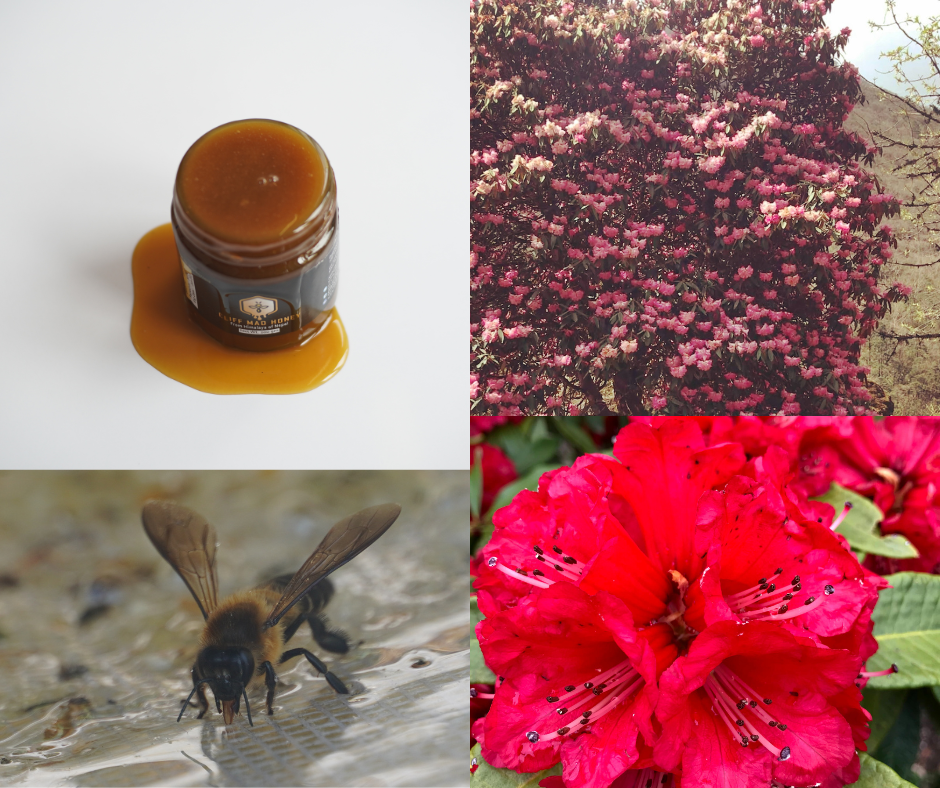
Interconnected between Rhodendrons flower, Himalayan giant bee and Mad Honey
Rhododendrons, Himalayan giant bees, and Mad Honey are all interconnected through a unique ecological relationship.
Rhododendrons are flowering plants that are native to the Himalayan region of Nepal and produce nectar that attracts the Himalayan giant bees, which are one of the largest bees in the world. These bees use the nectar to produce mad honey, which they store in their hives.
The honey produced by the Himalayan giant bees in May/June season is known as Mad Honey or Grayanotoxin honey. It contains grayanotoxins, a type of neurotoxin that can cause hallucinations, nausea, and other symptoms in humans when ingested in large quantities.
Interestingly, the grayanotoxins found in Mad Honey come from the nectar of the rhododendron flowers. When the bees collect nectar from the flowers, they also collect small amounts of the grayanotoxins present in the nectar. These toxins are then concentrated in the honey produced by the bees.
In some cultures, Mad Honey is used for medicinal purposes and it can be various health benefits, while others use it for recreational purposes due to its hallucinogenic effects. However, it can also be dangerous if consumed in excessive amounts, as it can lead to severe poisoning.
In summary, the relationship between rhododendrons, Himalayan giant bees, and Mad Honey is a fascinating example of the interconnectedness of different organisms in an ecosystem.

